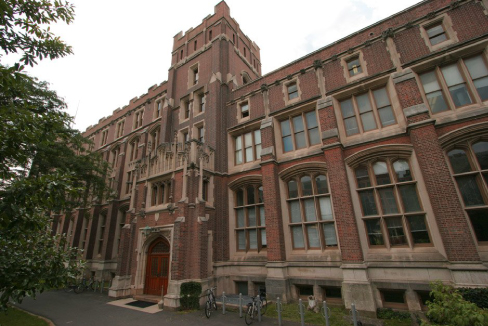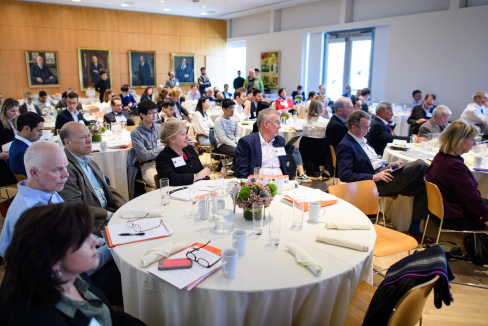Principal Investigator
At a Glance
Elena Shevliakova, NOAA/Geophysical Fluid Dynamics Laboratory (GFDL) scientist and Pacala Lab collaborator, is overseeing two novel climate-related studies. The first is aimed at understanding how remote irrigation practices, some as far east as Eurasia, influence precipitation patterns in Africa’s Sahel, the transition zone between the northern Sahara Desert and the southern savanna. The second explores the role of tropical forests in the global carbon cycle and worldwide climate change and how to improve representations of these forests in climate models and project their fate. Both studies promise to enhance our understanding of how anthropogenic and natural processes relate to global climate change.

Research Highlight
Researchers have long recognized that agricultural irrigation has a significant influence on local climate. It is a worldwide human activity that affects climate by altering regional water and energy exchange between land and atmosphere. However, the response of local climate to remote agricultural irrigation (e.g., many 100 kms away) remains little understood, despite these responses being hypothesized using climate models. Researchers are still trying to understand the physical mechanisms and robustness of response underlying this process.
Postdoctoral fellow Yujin Zeng, in collaboration with Chris Milly (United States Geological Survey), Sergey Malyshev and Elena Shevliakova (both CMI collaborators), is studying how remote irrigation in other parts of the world is leading to enhancement of Africa’s Sahel precipitation. Zeng used historical numerical experiments with the GFDL Earth System model ESM2Mb to show that between 1901 and 2015 precipitation in the Sahel was likely enhanced as a result of global irrigation during the West African monsoon season. His analysis shows that irrigation increases the Moist Static Energy (MSE) over irrigated area, and the increased MSE in central Asia, the Middle East, southeastern Europe, India and Pakistan is exported by prevailing winds to the Sahel region. The energy reaching the Sahel affects the local convective precipitation. In turn, more convective clouds form over the Sahel, reducing the downward shortwave radiation, which cools the surface. The resultant cooling induces a cyclonic wind anomaly that strengthens the West African monsoon circulation. This pulls Atlantic moisture further east into the eastern Sahel and induces more precipitation and cooling. This study suggests that irrigation in Eurasia could be an important factor helping to explain the recent precipitation trends observed in the Sahel and less drying than suggested by previous climate models without irrigation.
Tropical forests are key determinants in the functioning of the Earth system, but they remain a major source of uncertainty in carbon cycle models and in climate change projections. The increasing pressure from global change demands that scientists improve the representation of tropical forest in Earth System Models (ESMs). Research associate Isabel Martinez Cano, in collaboration with Elena Shevliakova, Sergey Malyshev, and the Steve Pacala lab, is leading development of the novel vegetation dynamics and carbon cycling models for tropical ecosystems.
Martinez Cano led development of a dynamic vegetation model (LM3PPA-TV) that represents tropical vegetation, including the characteristics of shade-tolerant tropical tree species (Figure 10.1). The development and parameterization of LM3PPA-TV incorporated extensive empirical datasets on tropical tree traits and long-term field censuses available at Barro Colorado Island (BCI). The model implements a new growth allocation scheme based on realistic assumptions about tree size scaling. It also incorporates hydraulic constraints on biomass accumulation and features a new compartment for tree branches and branch fall dynamics. Simulations at multiple tropical sites captured considerable variation in biomass and size structure across the tropical forest biome, including observed responses to precipitation and temperature. Model experiments suggested a major role of water limitation in controlling the geographical variation of forest biomass and structure.

Land tile covered by vegetation in LM3PPA-TV. The model structures vegetation in canopy layers that receive different amounts of light. Within each layer, individuals that are identical in functional type and similar in size are grouped into cohorts.
The continued pressure on tropical forests from global change demands models which are able to simulate alternative successional pathways and its pace to recovery. LM3PPA-TV provides a benchmark to continue improving the representation of tropical forests dynamics and their carbon storage potential in ESMs.




